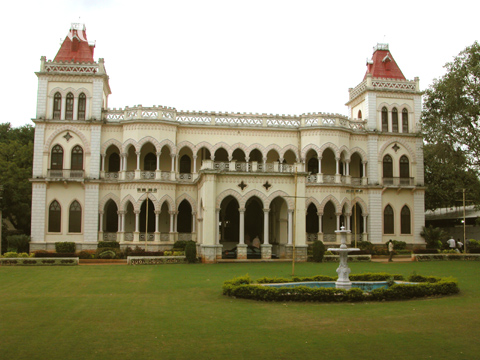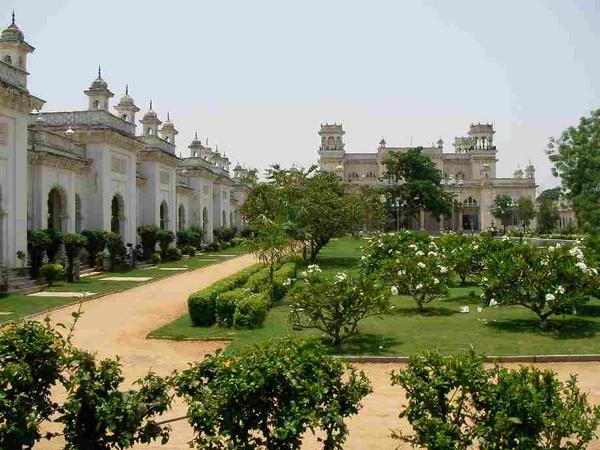Ninth in the super success of the series on the glorious history and the palaces of the great royal city of Hyderabad is the magnificent King Kothi Palace.
King Kothi Palace is a royal palace located in Hyderabad, India. It was the palace where the erstwhile ruler, the Seventh Nizam, Osman Ali Khan, Asaf Jah VII, of Hyderabad state lived here.
The palace was not purchased but instead given by Kamal Khan, and the young Nizam moved in when he was only 13. Fact pertaining to The nizam purchasing King Kothi is still under question by people from that era. The Nizam was famous for either taking what he wanted as a “nazr”(present) or by force. After his accession to the throne in 1911, he continued to stay at the palace and did not move to Chowmahalla Palace where his father lived.
In his sprawling King Kothi palace, diamonds, rubies, sapphires, pearls and lesser gems were stored in 3 steel trunks fastened with English-made padlocks. The Palace has three main buildings, divided into two groups.
The eastern half, now occupied by a state government hospital, was used by the Nizam for official and ceremonial purposes.
The western half which is now walled, has the main residential buildings known as Nazri Bagh or Mubarak Mansion and still belongs to the Nizam’s private estate. The main entrance to Nazri Bagh always had a curtain draped across it, so it has come to be known as the purdah gate. When Nizam went out of the Palace, the purdah was lifted up which indicated the king was not home. The gate was guarded by Maisaram Regiment, police and Sarf-e- Khas Army with lances in their hands.
Of the three principal buildings of the King Kothi Complex, the main building, now houses a hospital, and the Mubarak Mansion (Nazri Bagh) accommodating the offices of the Nizam’s Private Estates (Sarf E Khas) only survive. The third building, Usman Mansion, was demolished in the early eighties and in its place a new hospital building is constructed by the State Government. Originally built by an architect Kamal Khan, the complex was acquired by the Nizam VII. Both the surviving buildings in King Kothi are in European style. Nizam VII, the last ruling Nizam (1911-1948) lived here and died in this building on February 24, 1967.
The VI Nizam, Osman Ali Khan had willed that he be buried in the Judi Mosque that faced his fabulous residence, as his final resting place. To the east of Mubarak Mansion, stands the Ghadial Gate – the gate with a clock.
The King Kothi complex has various European styles. The canopies over windows, the intricate woodwork, the sloping tiled roofs in octagonal pyramid shapes of the Ghadial Gate complex, and the classical semicircular arches are among the characteristic features of King Kothi.
As mentioned earlier, the King Kothi Complex has remained in use for offices and Hospital.





